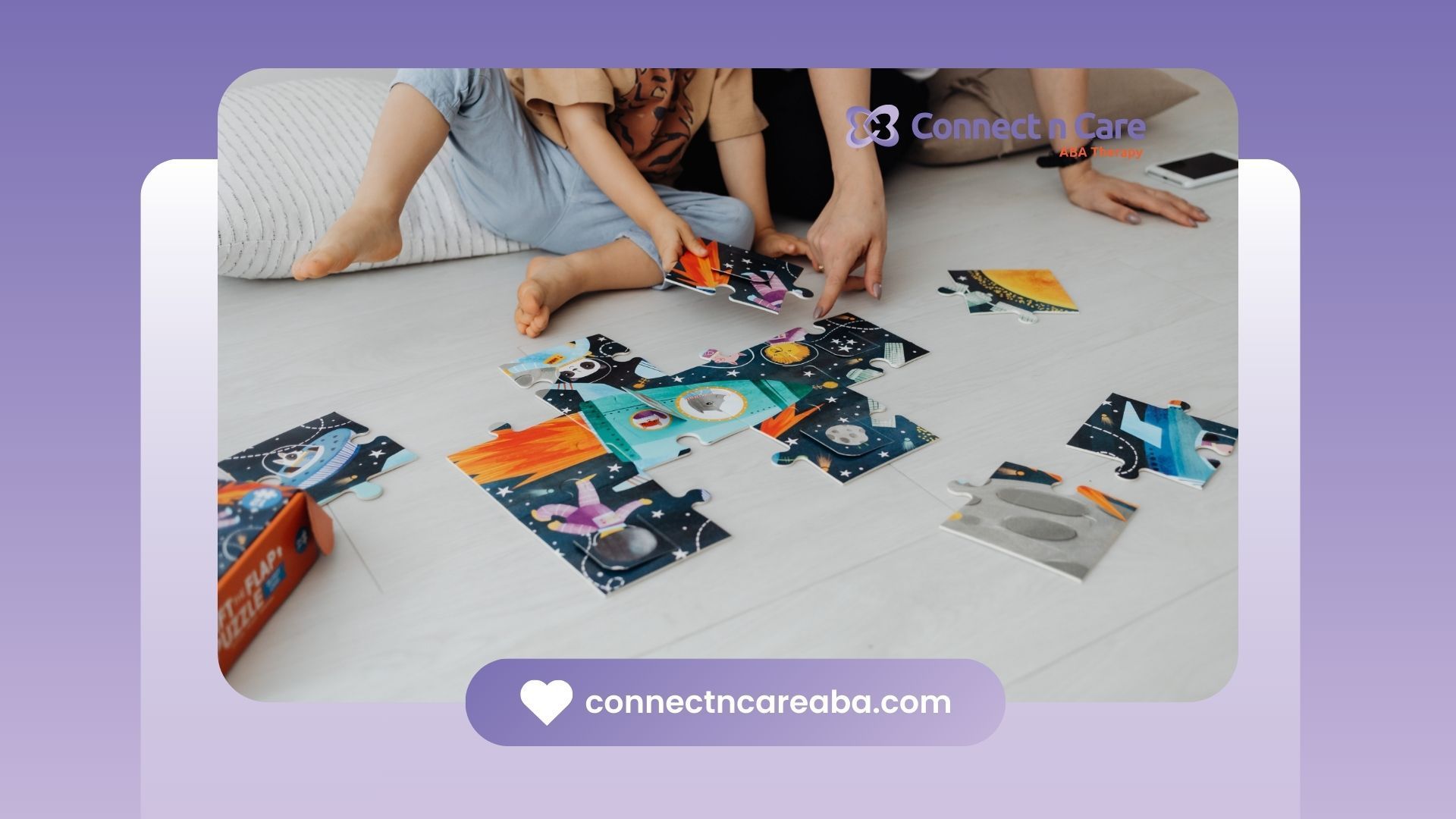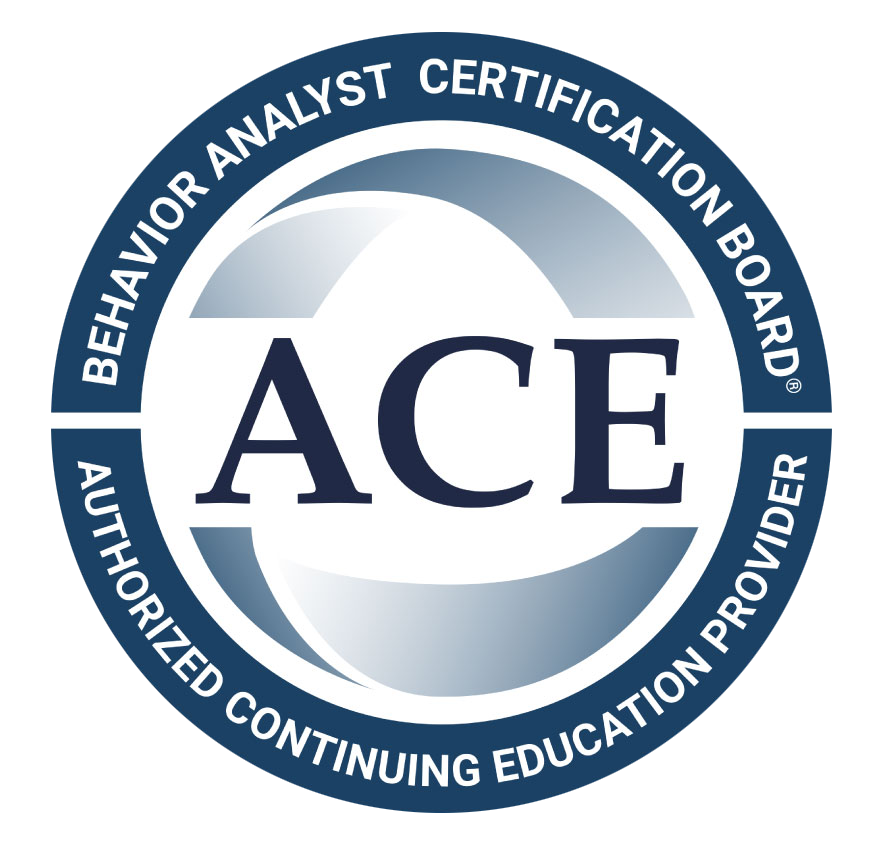Applied Behavior Analysis (ABA) therapy is widely recognized for its effectiveness in helping children with autism. While many know it for improving social and communication skills, its impact on cognitive development is just as significant. ABA therapy provides a structured framework that boosts a child’s ability to think critically and solve problems. This focus on skill acquisition empowers children, giving them the tools they need to navigate everyday challenges with greater confidence and independence.
What Is ABA Therapy and How Does It Influence Cognitive Skills?
ABA therapy, or Applied Behavior Analysis, plays a vital role in enhancing cognitive skills by using principles of behavior analysis to teach new abilities. It helps children, especially those with autism, develop problem-solving and critical thinking by breaking down complex issues into smaller parts. This systematic approach makes learning more accessible and less overwhelming.
Through structured activities and games, children learn to think flexibly and adapt to new information. This focus on skill development improves their ability to reason, analyze, and make decisions. Let's explore what ABA therapy is and why building these cognitive skills is so important for a child's growth.
Defining Applied Behavior Analysis (ABA) Therapy
Applied Behavior Analysis (ABA) therapy is a science-based approach focused on understanding and improving behavior. It is a highly structured and personalized therapy designed to teach valuable skills and reduce challenging behaviors.
The methods used in ABA are based on decades of research into the principles of learning.
At its core, ABA therapy involves identifying specific goals for a child and then using proven strategies to help them achieve those goals. Behavior analysts create individualized plans that target skills like communication, social interaction, and daily living tasks. They observe a child's behavior to understand what motivates them and use that information to create effective interventions.
This therapy is not a one-size-fits-all solution. Instead, behavior analysts continuously monitor progress and adjust the therapy plan to meet the child's unique needs. This ensures that the interventions remain effective and relevant as the child develops new abilities.
The Importance of Cognitive Skill Development in Children
Developing strong cognitive skills is fundamental to a child's ability to learn, reason, and interact with the world. These skills include attention, memory, problem-solving, and critical thinking. They are the essential tools children use to process information, understand concepts, and navigate their daily lives.
For all children, cognitive development is a stepping stone to academic success and social competence. When kids can think critically, they are better equipped to handle homework, make friends, and understand different perspectives. These abilities build a foundation for lifelong learning and independence.
Without these essential skills, children may struggle with everyday tasks that others find simple. Fostering strong cognitive abilities empowers your child to face challenges with confidence, adapt to new situations, and ultimately thrive in various environments, from the classroom to the playground.
Understanding Critical Thinking Within the ABA Framework
Within ABA therapy, critical thinking is not just an abstract goal; it is a practical skill taught through a structured approach. Behavior analysis principles are used during therapy sessions to break down the process of thinking into observable and teachable steps. This helps children learn how to analyze situations, evaluate options, and come to logical conclusions.
This focus is important because critical thinking allows children to move beyond simply following instructions to truly understanding and interacting with their environment. Below, we’ll look at the core components of critical thinking and explain why it is such a vital part of the ABA process.
Core Elements of Critical Thinking for Kids
Critical thinking for children involves a set of cognitive skills that allow them to think logically and solve problems effectively. It’s about teaching them how to think, not just what to think. This process encourages kids to ask questions, examine evidence, and consider different viewpoints before making a
decision.
Developing these skills helps your child move toward greater independence. Instead of relying on others for answers, they learn to analyze situations on their own. The core elements of critical thinking include:
- Analysis: Breaking down information into smaller parts to understand it better.
- Reasoning: Using logic to draw conclusions from information.
- Problem-Solving: Identifying a challenge and developing a strategy to overcome it.
- Adaptability: Adjusting one's thinking when presented with new information or situations.
By nurturing these abilities, you equip your child with the mental tools needed to navigate a complex world. They learn to approach challenges with curiosity and confidence, which is a key goal of fostering these cognitive skills.
Why Critical Thinking Matters in ABA Therapy
Critical thinking is a central focus in ABA therapy because it directly impacts a child's ability to function independently in everyday life. The goal of ABA is not just to teach rote behaviors but to equip children with skills they can apply to new and unexpected situations. This is where critical thinking becomes essential.
When a child learns to think critically, they can solve problems that arise at school, at home, or in the community. For example, if a favorite toy is missing, a child with strong critical thinking skills might retrace their steps or ask for help, rather than becoming overwhelmed. This kind of practical problem-solving is a direct result of effective skill acquisition.
Ultimately, ABA therapy aims to improve a child's quality of life. By building critical thinking abilities, the therapy helps children become more adaptable, resilient, and confident. These skills empower them to engage more fully with the world around them.
Foundations: How ABA Therapy Builds Problem-Solving Abilities
ABA therapy establishes a strong foundation for problem-solving by teaching skills in a clear and systematic way. Therapists use techniques that break down complex challenges into manageable steps, making it easier for a child to learn without feeling frustrated. This methodical approach is key to successful skill development.
Positive reinforcement strategies are used to reward effort and success, which motivates children to practice and improve their problem-solving abilities. Therapists measure improvements by collecting data on a child's performance over time, ensuring the approach is effective. Let's look at how breaking down tasks and using reinforcement helps foster these crucial skills.
Breaking Down Tasks to Foster Independent Thinking
One of the most effective techniques in ABA therapy is breaking down complex tasks into small, manageable steps. This method, often part of approaches like Discrete Trial Training (DTT), allows a child to master one part of a skill before moving on to the next. For instance, instead of just telling a child to "get dressed," the task is broken down into steps like "put on your shirt" and "pull up your pants."
This step-by-step process reduces anxiety and makes learning feel achievable. As your child successfully completes each small step, they build confidence in their abilities. This gradual mastery is crucial for fostering independent thinking, as it teaches them to approach larger challenges methodically.
By learning to tackle tasks one piece at a time, children develop a framework for problem-solving that they can apply to many other situations. This skill helps them become more self-sufficient and less reliant on prompts from caregivers.
Using Positive Reinforcement to Enhance Cognitive Growth
Positive reinforcement is a cornerstone of ABA therapy and a powerful tool for promoting cognitive growth. This technique involves providing a rewarding consequence immediately after a child demonstrates a desired skill or behavior. The reward could be praise, a favorite toy, or a fun activity, which encourages them to repeat that behavior in the future.
These reinforcement strategies are vital for cognitive development because they build motivation. When a child learns that trying to solve a problem leads to a positive outcome, they are more likely to persist through challenges. This positive association fosters a love of learning and exploration.
By consistently applying positive reinforcement, therapists and parents help children feel successful and capable. This boost in confidence supports their willingness to tackle more complex cognitive tasks, leading to significant and lasting cognitive growth over time.
Key Techniques ABA Therapists Use to Teach Critical Thinking
ABA therapists and behavior analysts use a variety of specific ABA techniques to teach critical thinking. These methods rely on a structured and systematic approach to skill-building, ensuring that learning is consistent and effective. Techniques such as task analysis and scenario-based learning are designed to help children think logically and flexibly.
This structured approach allows therapists to teach complex cognitive skills in a way that is easy for a child to understand and master. The following sections will explore some of these key strategies in more detail, showing how they promote deeper thinking and adaptability.
Task Analysis and Step-by-Step Strategies
Task analysis is a fundamental technique in ABA therapy where a complex skill is broken down into a sequence of smaller, more manageable actions. This step-by-step strategy helps children learn skills without feeling overwhelmed. For example, teaching a child to brush their teeth involves multiple steps, from getting the toothbrush to rinsing their mouth.
Therapists use data collection to track a child's progress on each step, allowing for adjustments to the teaching plan as needed. This ensures that the child masters each component before moving forward. This methodical process not only teaches the skill itself but also reinforces a systematic approach to problem-solving.
This technique empowers children by making daunting tasks achievable. As they learn to follow these steps, they gain independence and confidence in their ability to handle multi-step routines.
| Skill Area | Focus of Development | Impact on Critical Thinking |
|---|---|---|
| Self-Help Skills | Personal hygiene routines | Promotes sequencing and planning |
| Academic Tasks | Completing homework | Builds organizational and time management skills |
| Social Interactions | Joining a game with peers | Enhances a child's ability to analyze social cues |
Encouraging Flexibility Through Scenario-Based Learning
To prepare children for the real world, ABA therapy often uses scenario-based learning to encourage cognitive flexibility. This approach involves creating simulated situations that mimic everyday challenges, allowing children to practice their problem-solving skills in a safe and supportive environment. It helps them learn to adapt their thinking when faced with new situations.
Role-playing is a common form of scenario-based learning. A therapist might act out a situation, like another child taking a toy, and guide the child through appropriate responses. This helps them think on their feet and consider different solutions to complex problems. Activities that promote this flexibility include:
- Puzzle Solving: Encourages trying different strategies when one doesn't work.
- Matching Games: Enhances pattern recognition and memory.
- Role-Playing Social Scenarios: Builds skills for navigating social interactions.
- Creative Building Tasks: Fosters imaginative solutions to structural challenges.
These activities teach children that there can be more than one way to solve a problem. This fosters resilience and creativity, which are essential for navigating the unpredictable nature of daily life.
Real-Life Examples: ABA Activities That Promote Problem-Solving
ABA therapy is filled with practical, engaging activities that integrate problem-solving into daily life. These activities are designed to be fun while teaching essential life skills. By turning learning into play, therapists help children with autism develop critical thinking abilities that they can use to overcome daily challenges.
From structured games to everyday routines, these exercises provide repeated opportunities to practice reasoning and adaptability. Let's explore some specific examples of ABA activities that stimulate these cognitive skills and examine how they help children transfer their learning to different settings.
Activities That Stimulate Reasoning and Adaptation
Many ABA activities are specifically designed to build a child’s capacity for reasoning and adaptation. These exercises are often woven into everyday routines to make learning feel natural and relevant. The goal is to strengthen cognitive skills through hands-on, interactive experiences.
For example, engaging games can be used to teach complex concepts. A scavenger hunt can help a child follow multi-step directions and solve clues, while puzzle-solving encourages logical thinking and spatial reasoning. These activities challenge a child to think critically and adjust their strategy when they encounter an obstacle. Some stimulating activities include:
- Scavenger Hunts: Promotes following directions and problem-solving.
- Role-Playing: Helps children practice social reasoning and conflict resolution.
- Building with Blocks: Encourages planning, creativity, and adapting to structural issues.
- Memory and Matching Games: Strengthens attention and pattern recognition.
By participating in these activities, children learn to analyze situations and adapt their approach as needed. This practice builds a strong foundation for handling real-world problems.
Helping Children Transfer Skills Across Different Settings
A crucial goal of ABA therapy is ensuring that new skills are not confined to the therapy room. The process of applying learned abilities in various settings is known as generalization. Therapists work to help children use their skills at home, at school, and in the community.
To achieve this, therapists intentionally practice skills in different environments. For instance, a social skill learned during a one-on-one session might be practiced next in a small group, and then on the playground. This gradual exposure helps children feel more confident using their new skills with different people and in new places.
This focus on generalization is what makes skill acquisition so powerful. When a child can successfully use their problem-solving abilities across various contexts, it demonstrates true mastery and leads to greater independence and a higher quality of life.
Involving Parents and Families in Cognitive Skill Building
The involvement of parents and families is a key ingredient for success in cognitive skill building. When collaboration exists between therapists and caregivers, children benefit from a consistent and supportive environment where they can practice their new abilities. Parents are actively involved and taught how to use ABA strategies at home.
This partnership ensures that learning continues outside of formal therapy sessions, reinforcing skills and promoting faster progress. Below, we'll discuss how parents can support problem-solving at home and the collaborative roles that create a strong support system for the child.
Ways Parents Support Problem-Solving at Home
Parents can play a powerful role in reinforcing problem-solving skills within the home environment. By incorporating simple strategies into daily routines, you can help your child practice critical thinking and build confidence. One of the most effective ways is to ask open-ended questions that encourage reasoning, such as "What do you think will happen next?"
Using the same reinforcement strategies as the therapist creates consistency for your child. Praising their effort when they try to solve a problem on their own can be highly motivating. Here are a few ways parents can help:
- Turn everyday chores into learning opportunities. For example, ask your child to help sort laundry by color.
- Encourage creative solutions. If a toy is stuck, ask them for ideas on how to get it out.
- Read stories and ask predictive questions. This builds comprehension and reasoning skills.
- Model problem-solving out loud. Talk through your own thought process when you face a small challenge.
These simple actions help integrate the development of life skills into your family's daily life, making learning a natural and ongoing process.
Collaborative Roles: ABA Therapists, Teachers, and Caregivers
Effective ABA therapy thrives on collaboration between all the key figures in a child's life: therapists, teachers, and caregivers. When everyone works together as a team, it creates a unified approach to supporting the child's development. This consistency is vital for reinforcing new skills and behaviors across all environments.
Therapists often provide training and resources to parents and teachers, ensuring everyone is using the same strategies. Regular communication helps the team share progress, discuss challenges, and align goals. For example, a skill learned in therapy, like asking for help, can be prompted and reinforced by a teacher in the classroom.
This collaborative effort ensures that the child receives consistent support for daily living skills, whether at home, school, or during therapy sessions. By working in partnership, the team maximizes the child's learning opportunities and helps them achieve lasting success.
Conclusion
In summary, ABA therapy plays a pivotal role in nurturing critical thinking skills in children. By emphasizing cognitive skill development and employing specific techniques, therapists can effectively enhance problem-solving abilities. The collaborative approach that includes parents and caregivers further solidifies these skills, ensuring that children can apply what they learn in various settings. Understanding the foundations of critical thinking within the ABA framework allows for a more structured and impactful learning experience. If you're interested in exploring how ABA therapy can benefit your child’s cognitive growth, don’t hesitate to reach out for a free consultation with our specialists. Together, we can foster an environment where critical thinking thrives!
At Connect n Care ABA, we believe that truly effective therapy builds profound intellectual abilities that last a lifetime. We are the premier provider specializing in developing these higher-order cognitive skills. Our expert clinicians customize programs to move your child from rote learning to true understanding, encouraging problem-solving, flexible thinking, and complex reasoning. We believe in teaching your child how to think, not just what to do, ensuring they are equipped with the critical thinking necessary to thrive in school and life. Partner with Connect n Care ABA to nurture an inquisitive mind and build a lasting connection with your child.
Frequently Asked Questions
How long does it take to see progress in problem-solving skills with ABA therapy?
The timeline for progress in ABA therapy varies for each child, as skill development depends on individual needs and the intensity of therapy sessions. Therapists use consistent data collection to monitor progress closely. Some children may show improvements in a few months, while others may require more time to build foundational skills.
Is ABA therapy effective for critical thinking in older children with autism?
Yes, ABA therapy is effective for teaching critical thinking to older children with autism spectrum disorder. The strategies are adapted to be age-appropriate and focus on more complex problem-solving relevant to their daily lives, such as social situations and academic challenges. Skill acquisition of these essential skills remains a key goal.
Can ABA strategies for developing critical thinking be used outside of clinical sessions?
Absolutely. A major goal of ABA is to generalize skills to real-world settings. The ABA strategies for critical thinking are designed to be integrated into daily routines at home and school. This helps children practice these life skills in their natural home environment, making learning more meaningful and effective.









